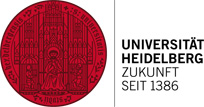Heidelberg Researchers Investigate Cytotoxic Effect of Ebola Virus
13 July 2015

Photo: BZH
In the course of basic research in membrane biochemistry scientists at Heidelberg University have gained new insight into the cytotoxic effect of the Ebola virus. Employing biochemical and cell biological methods they have shed light on the molecular relationships between the Ebola glycoprotein and its role in mediating cytotoxicity. Prof. Dr. Felix Wieland and his team at the Biochemistry Center (BZH) discovered that the virus glycoprotein interacts with cellular cholesterol, thus prompting the use of certain cholesterol-lowering agents in their investigations. The researchers report they succeeded in suppressing cellular damage in cell cultures. The results of this research were published in the journal “Nature Communications” and may point to new approaches in the treatment in acute cases of Ebola infection.
Since 2014, West Africa has experienced the largest Ebola outbreak in history. Experts estimate that the infectious disease, Ebola fever, has claimed more than 11,000 lives to date. The high pathogenicity of the filamentous Ebola virus results from its manifold molecular interactions with its host. At the end stage of the disease, the innermost layer of the blood vessels becomes increasingly leaky, causing the loss of cell-to-cell contact. The loss of this endothelial barrier causes massive internal bleeding in the host organism. The glycoprotein situated in the envelope around the virus plays a major role in causing this internal bleeding. It also helps the virus gain access to the host cell and then influence numerous cellular functions. The glycoprotein consists of two subunits called GP1 and GP2. Moritz Hacke, the study’s primary author and a member of Prof. Wieland’s team, explains that until now, the GP1 subunit was implicated in the cellular damage.
The Heidelberg researchers have now demonstrated that the membrane-anchored GP2 subunit alone is sufficient to cause cellular toxicity. GP2 causes the cellular connections to break down and may therefore be a factor in the loss of the endothelial barrier in the case of infection. At the same time it launches a massive formation of filaments – thin, threadlike cell structures – at the membrane of the infected cell, leading the researchers to assume that the GP2 subunit is involved in the assembly of the virus membrane. Their studies at the Biochemistry Center also revealed that the Ebola glycoprotein has an unusual amino acid pattern in what is known as its membrane anchor. This anchor comprises a specific sequence of amino acids and is responsible for the localisation of the protein in the plasma membrane. The particular amino acid pattern that the Heidelberg researchers discovered in the membrane anchor enables specific interactions between the virus glycoprotein and the membrane lipid cholesterol in the host organism.
“Our findings suggest that both the cytotoxicity of the Ebola glycoprotein and the filament formation at the host plasma membrane could be regulated based on the amount of cholesterol in the cell”, explains Dr. Andreas Ernst, the corresponding author of the publication. The Heidelberg researchers have therefore introduced lipid-reducing agents in their investigations, including a certain statin. The authors report a reduction in cellular cholesterol in the cell culture model and ultimately a suppression of the cell detachment effect induced by the glycoprotein of the Ebola virus. “Should this protective effect also prove true in the organism, cholesterol-lowering medications could have great potential in the treatment of acute Ebola virus infection. These fundamental biochemical observations therefore need to be explored in further studies”, states Prof. Wieland.
Original publication:
Moritz Hacke, Patrik Björkholm, Andrea Hellwig, Patricia Himmels, Carmen Ruiz de Almodóvar, Britta Brügger, Felix Wieland, and Andreas M. Ernst : Inhibition of Ebola virus glycoprotein-mediated cytotoxicity by targeting its transmembrane domain and cholesterol. Nature Communications (9 July 2015), doi: 10.1038/ncomms8688

